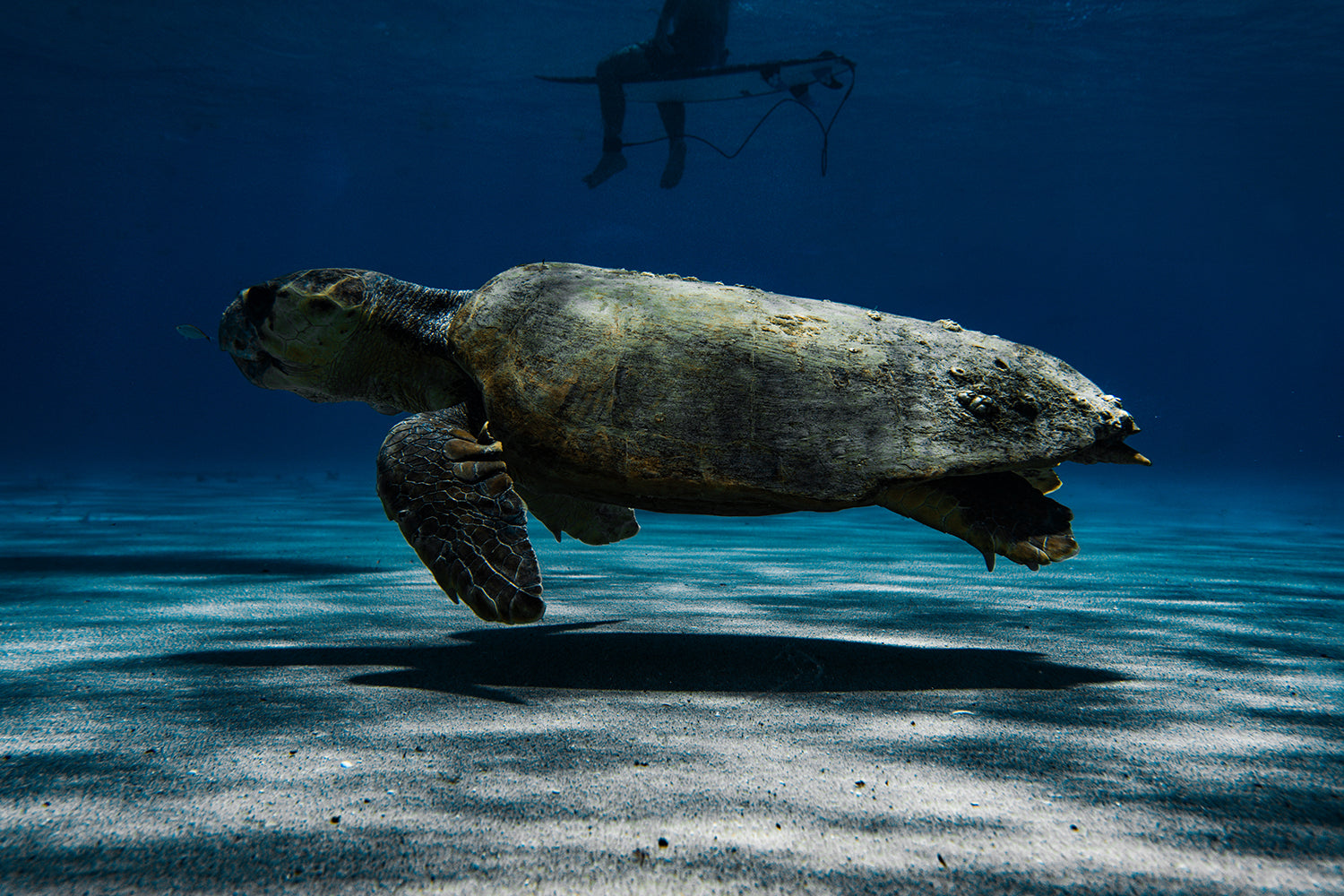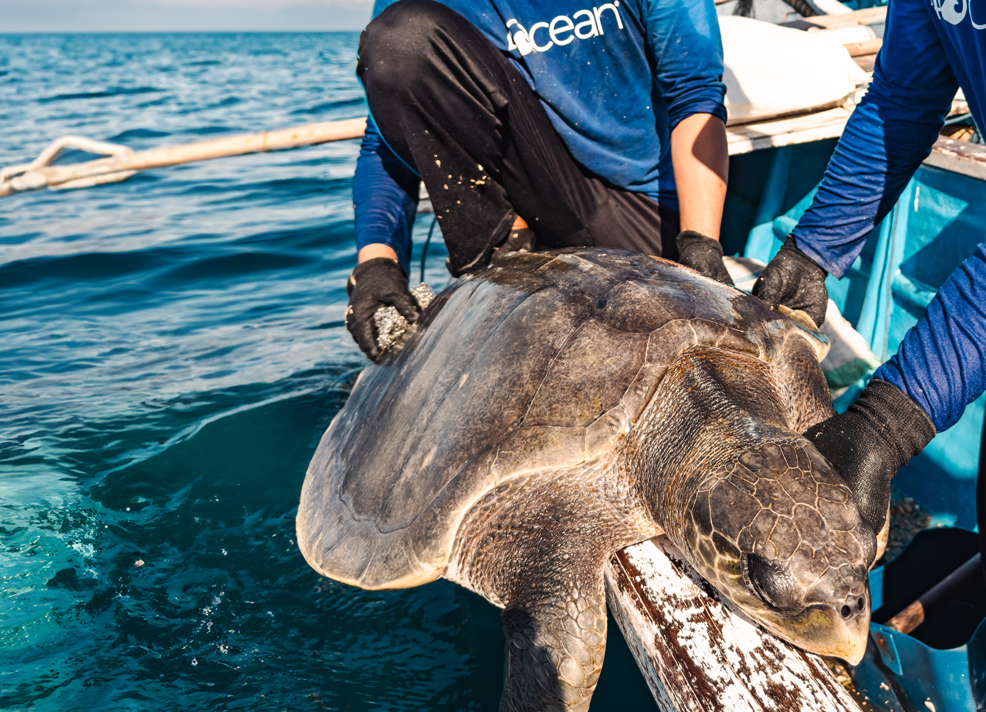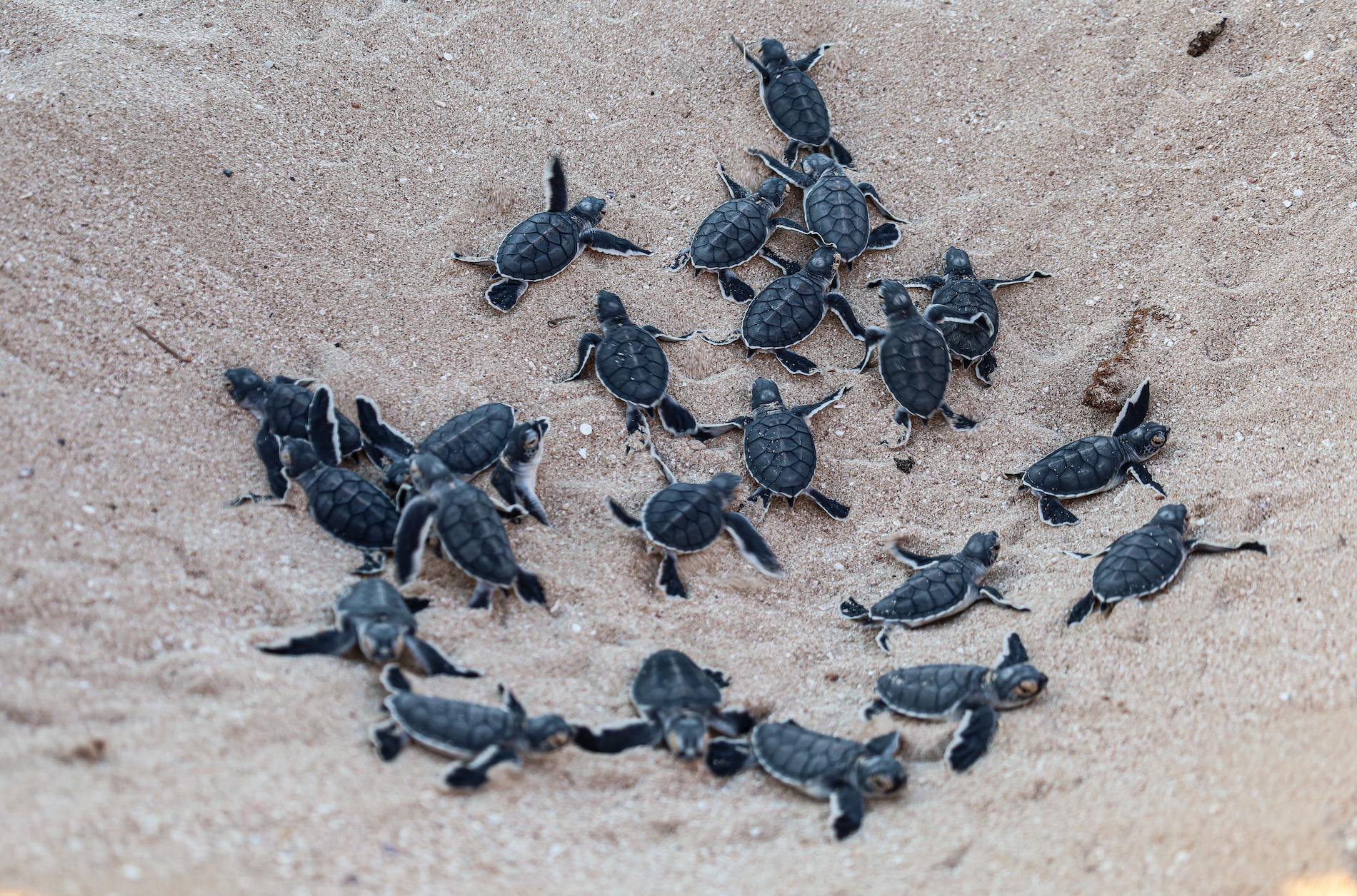5 MIN READ
6-10-2024
Hot Chicks,
Cool Dudes.
Mikaela Walsh, 4ocean Research Analyst
Where are all the male sea turtles?
Combatting the changing climate has been challenging for many aquatic organisms. Rising temperatures have been shown to have detrimental effects on the marine environment across the globe. An organism that has been observed to have significant impacts of the new heightened temperatures includes species of sea turtles.
Sea turtles are classified in the reptile family, which includes laying fertilized eggs and allowing them to incubate and develop into embryos before hatching. Some reptiles are unique in that the sex of the organism is not determined by the genotype but instead by environmental factors affecting the phenotype of the individual during the incubation period.
Temperature-dependent sex determination (TSD) has been observed across multiple reptile species, including alligators, crocodiles, some lizards, and most turtle species. TSD means the temperature at which the eggs are incubated during embryonic development, which plays a role in determining the organism's sex. The effect of TSD only occurs at a specific point during the incubation period.
Well, there’s a new crisis being recognized across South Florida with rising sand temperatures. The phrase “hot chicks, cool dudes” is in reference to female turtles resulting from a high incubation temperature, whereas males are from a lower temperature. Since the sands in South Florida have increased, more female turtles have been documented than males, to the extent that it is becoming increasingly rare to find male sea turtle hatchlings amongst nests in South Florida.

The temperature of the sand where these eggs are incubated is crucial. Research supports that temperatures below 81.86ºF produce male hatchlings, whereas temperatures above 88.8ºF produce female hatchlings. Temperatures in between 81.86-88.8ºF produce a mixture of male to female ratio of turtles. Another important note that has been observed is if the nest temperature is too hot, the hatchlings can undergo a lethal occurrence. Many nests are experiencing temperatures higher than 88.8ºF, making it extremely difficult to find baby male sea turtles across the Florida coastline and other prominent sea turtle nesting sites across the globe.

With the rising temperatures of sand, many issues arise regarding the future of these currently endangered species. Most species of sea turtles are currently threatened or critically endangered due to various hazards, including but not limited to plastic ingestion, marine debris entanglement, and boat strikes.
It is estimated that only 1/1,000 to 1/10,000 sea turtle hatchlings make it to adulthood. Since the presence of male sea turtles is low due to incubation temperature, this could have detrimental effects on the survival of the sea turtle species. Male sea turtle hatchlings have been observed during cool, wet seasons, but no male hatchlings are present during hot, dry nesting seasons. This could be just as destructive as the other impacts these organisms face.
Sea turtle populations across our ocean have been declining. World Sea Turtle Day is a way to spread awareness and appreciation of this beloved organism. Learn ways to minimize your impact on sea turtles.

You May Also Like




